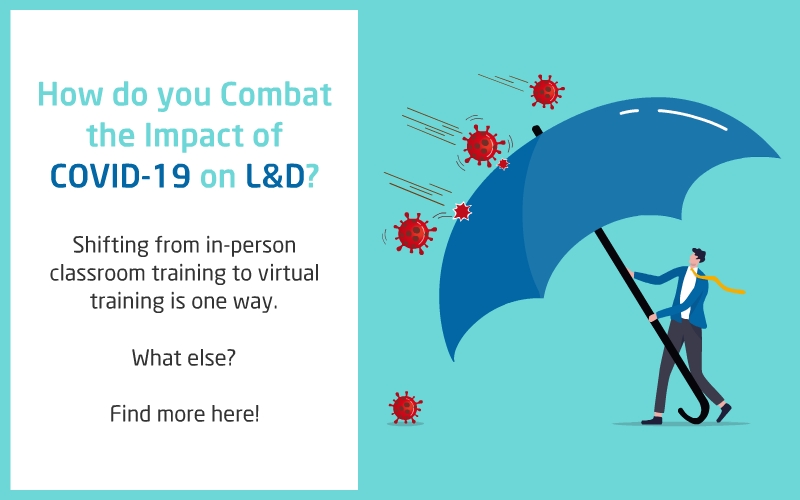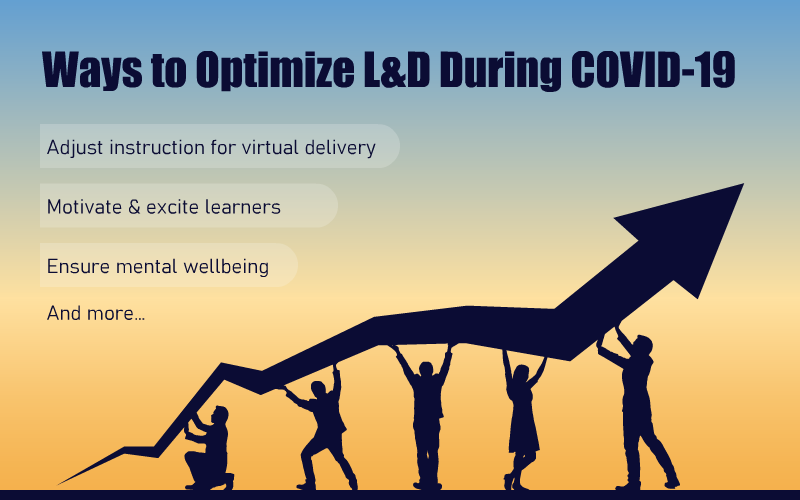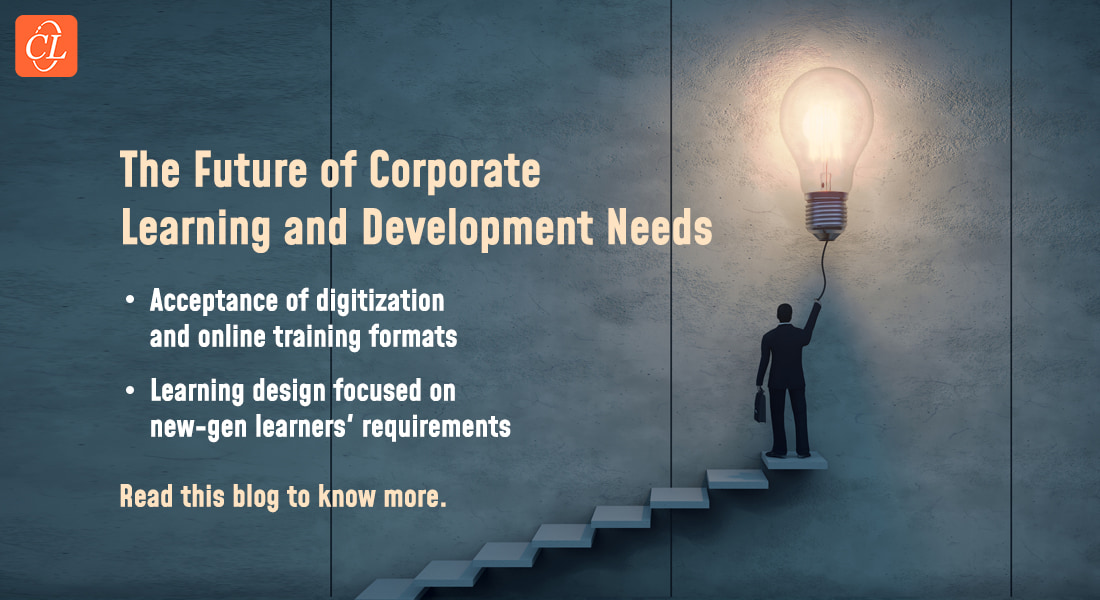COVID-19 and Workplace Training – 3 Alternatives to Classroom Training

In my last blog, I wrote about how COVID-19 is forcing businesses across the globe to look for agile modes of operations, launch new products/services, and transform customer engagement strategies, quickly. Not surprisingly, workplace training has emerged as one of the worst-hit areas. According to a survey we conducted, over 57% organizations have recorded a huge impact on their workplace training due to COVID-19. The impact of COVID-19 is especially severe for organizations that were highly dependent on face to face classroom or Instructor-led Training (ILT). They were not prepared for the sudden disruption to classroom training, the need to move training online, and the challenges that came with it – budgetary constraints due to economic instability, lack of infrastructure (including bandwidth and systems), experience with remote learning, and most importantly, ill-prepared classroom trainers and learners.
Combat the Impact of COVID-19 on Workplace Training
3 Ideas to Move Training Online- Shift to virtual from classroom training
- Create a repository of digital assets
- Reconfigure post-training support
Discover how to master the art of designing and delivering impactful virtual training.
However, organizations can neither halt nor pause critical workplace training, even as they move toward working remotely. To continue to deliver effective training, L&D leaders need to adopt new training strategies and establish or configure virtual training solutions. Moreover, if there’s one lesson we need to learn from the present situation, it is the necessity of future-proofing training. Shifting from face to face to virtual training is just the first step toward that. On a positive note, you can take this opportunity to implement a few much-needed innovations in your workplace training. Here are 3 tips for learning leaders to help lessen the impact of COVID-19 on training, future-proof workplace learning and development, and foster a new and improved learning culture in their organizations. They will come in handy as you reimagine your workplace learning.
3 Ways to Reconfigure Workplace Training to Reduce the Impact of COVID-19
1. Shift from Classroom to Virtual Training
Learning leaders are being tasked with shifting their face to face classroom programs to virtual training as quickly as possible. For most of these virtual programs, ensuring the same level of engagement and efficacy seen in the classroom is critical, to meet learner expectations. You can choose between synchronous (Virtual Instructor-led Training or VILT) and asynchronous learning (eLearning) methods to go virtual. That said, a mere ‘copy and paste’ approach of converting your conventional classroom to virtual training may not be the best choice. There are two important considerations for a successful transition.
- Replacing what works best in the classroom with an online equivalent
- Basing solutions on adult learning principles, instead of blindly going with what technology has to offer
Once these are established, you need to ensure that the eLearning and VILT are as impactful as in-person classroom sessions. Here’s how you can do it. For both eLearning and VILT, you need to:
|
Ways to Make eLearning and VILT Impactful |
|
|
eLearning |
VILT |
|
|
2. Create a Repository of Digital Learning Assets
Fast forward to the next few years (as we move toward a world more in tune with remote working): Workplace learning is going to be more social, collaborative, and multi-dimensional. With technology enabling on-demand learning and sharing, everyone in the organization is going to look for formats that facilitate learning and sharing. But what can be done to enable such a learning culture right now, to beat the impact of COVID-19 on your workplace training? Create and offer microlearning solutions! Microlearning assets are perfect for creating a “Netflix for Digital Learning” in your organization. You can create a repository with a range of assets – micro videos, interactive eBooks and PDFs, audio podcasts, GIFs, game and simulation-based nuggets, blog posts, and so much more. In fact, you can even digitize certain ILT resources into microlearning.
- Printed manuals or process maps used in classroom sessions can be turned into interactive eBooks and PDFs.
- Case studies discussed in ILT sessions can be converted into scenario-based nuggets.
- The Q&A at the end of the classroom session can be turned into micro FAQ modules.
- Conventional reference guides can be digitized into ‘how-to’ micro video demos.
- Printed job-aids can be converted to infographics with quick takeaways.
- Recordings of classroom sessions can be broken down into micro videos (on one learning objective each) for post-training reference.
There are multiple reasons microlearning makes sense for creating a digital repository. It offers bite-size nuggets, each focused on a specific learning objective. Assets are easy to create, update, and share. Moreover, in these challenging times, microlearning assets can ease learning in the flow of work, without taking a lot of time. In fact, it is ideal for remote workers to access learning on their mobile devices. For the matter of fact, even your learners would want to chip in (with user-generated content) and help foster a continuous learning culture, and more so to build a repository of digital learning assets. These assets can be used to either support formal training or provide complementary learning that is decentralized, created quickly, and updated according to topical or business needs.
3. Reconfigure Post-Training Support
We know that learning is a process, not just a one-off event. And to overcome the ‘forgetting curve’, learning has to be:
- Spaced over time
- Repeated at regular intervals
This means, for learning to be effective, post-training solutions are as important as the initial training. This can be implemented during the virtual learning journey through pre-reading, online discussion forums, and post-learning reflection activities. Another effective approach is to embed learning in the workflow by providing digital assets for performance support at the point of need. Let’s take the case of sales training for a new product. After the formal training session, you need to provide performance support to enhance employee performance (more sales closures) right before they meet customers. How can you do that? You can offer a/an:
- Mobile app to help employees look up product features and its working
- Infographic that offers a comparison chart of top competitors at-a-glance
- Social learning platform that sales executives can use to interact with others in similar situations
As another example, to teach learners how to use specific equipment, you can provide a step-by-step audio tour they could use after training, when they start using the equipment in their workplaces. The learning industry is facing disruptions like never before due to COVID-19. As we navigate through all the confusion and uncertainty, we can make this an opportunity to reimagine our workplace learning. Applying intentional design and delivery strategies to create social, effective, and immersive learning solutions will lead to resilient ( and future-proofed) learning solutions – effective in crises and also during ‘good’ times. In my next blog, we’ll look into working effectively, remotely. For more updates on the impact of COVID-19 on L&D, watch this space.
End Note
While I talked at length on how migrating from classroom to virtual training is the need of the hour, you may be wondering how to convey these benefits to your decision-makers. Here’s something that might help! Download our free eBook to know how to make a strong business case for eLearning!





